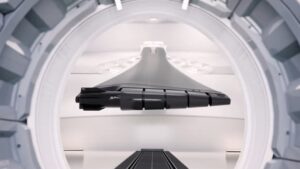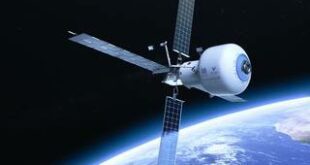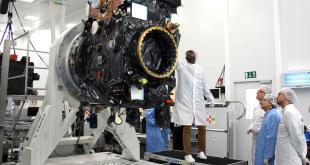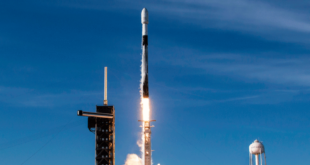
Edinburgh, 30 November 2021. – SpinLaunch conducted a successful first test flight of their alternative method of launching spacecraft into orbit in New Mexico last month, CNBC reported.
The launch system uses kinetic energy with a centrifuge spinning the rocket faster than the speed of sound before releasing.
The start-up, founded in 2014 has raised US $110 million so far from investors including Google Ventures, Airbus and Catapult. October’s test flight validated the company’s aerodynamic models and allowed trying out new release mechanism technologies, SpinLaunch said.
SpinLaunch’s first suborbital flight was launched from their suborbital accelerator, standing at over 50 meters tall. The vacuum-sealed rotating arm accelerated the vehicle to high speeds and then released it in less than a millisecond. The suborbital projectile was more than 3 meters long and did not have a rocket engine on board. The company utilised about 20% of the accelerator’s full power capacity for the launch.
SpinLaunch is to conduct about 30 suborbital test flights in the next six to eight months from Spaceport America, New Mexico. The full-scale system will be three times the size of the suborbital accelerator. SpinLaunch’s kinetic launch system aims to reduce the size of the rocket, its complexity and cost as it does not need a fuel-filled booster. Their design would be able to carry about 200 kg of payload to orbit.
 SpaceWatch.Global An independent perspective on space
SpaceWatch.Global An independent perspective on space




